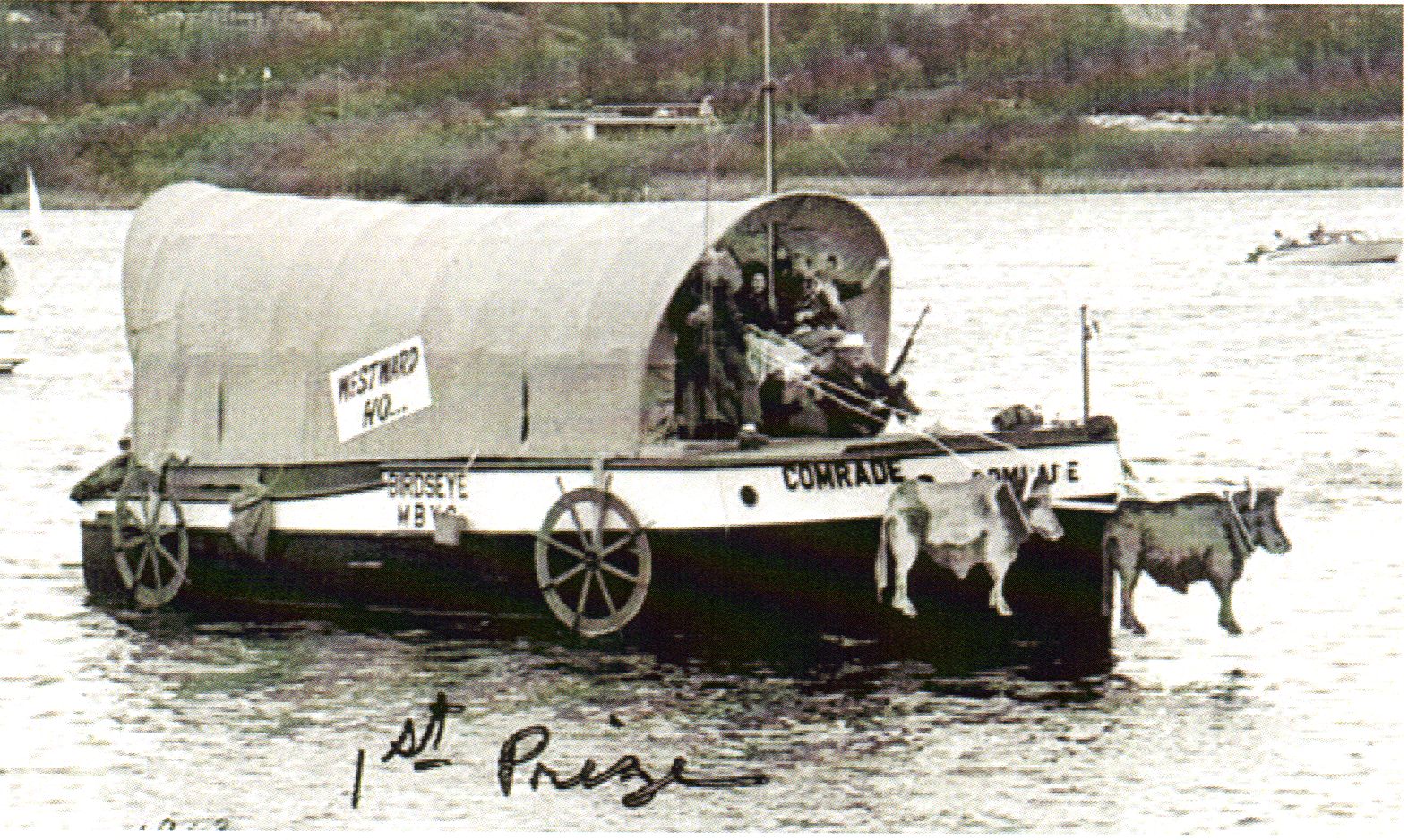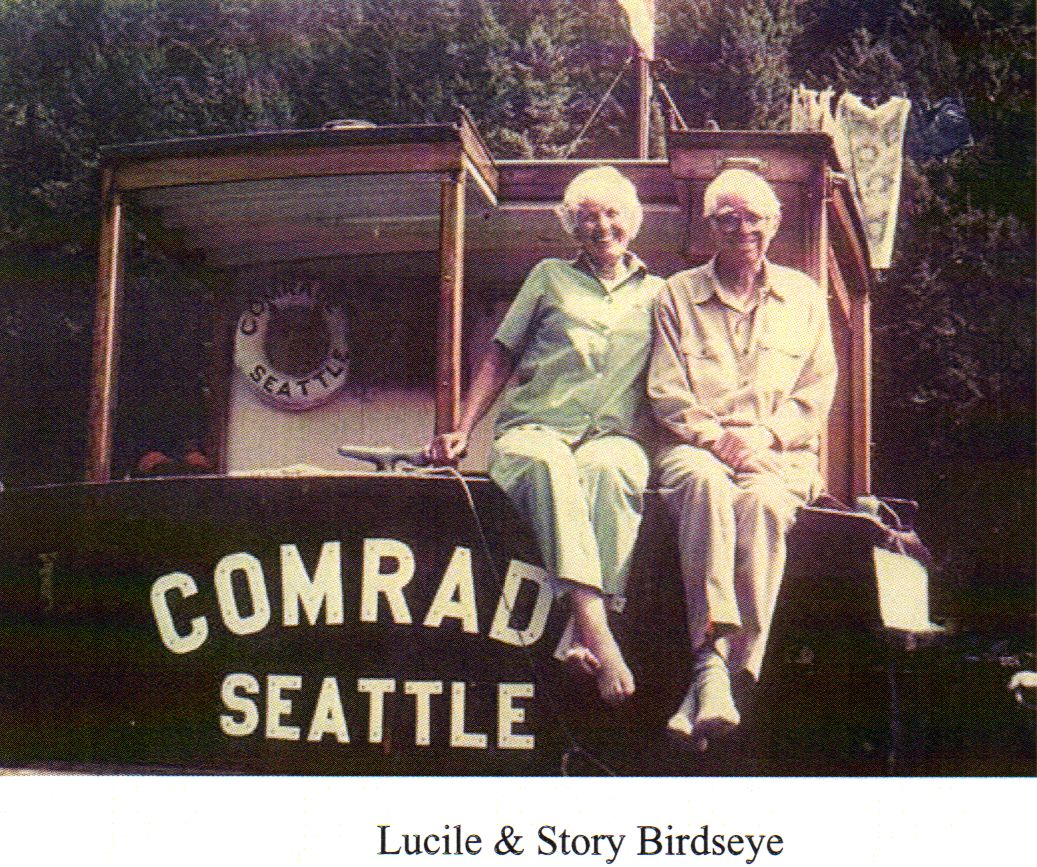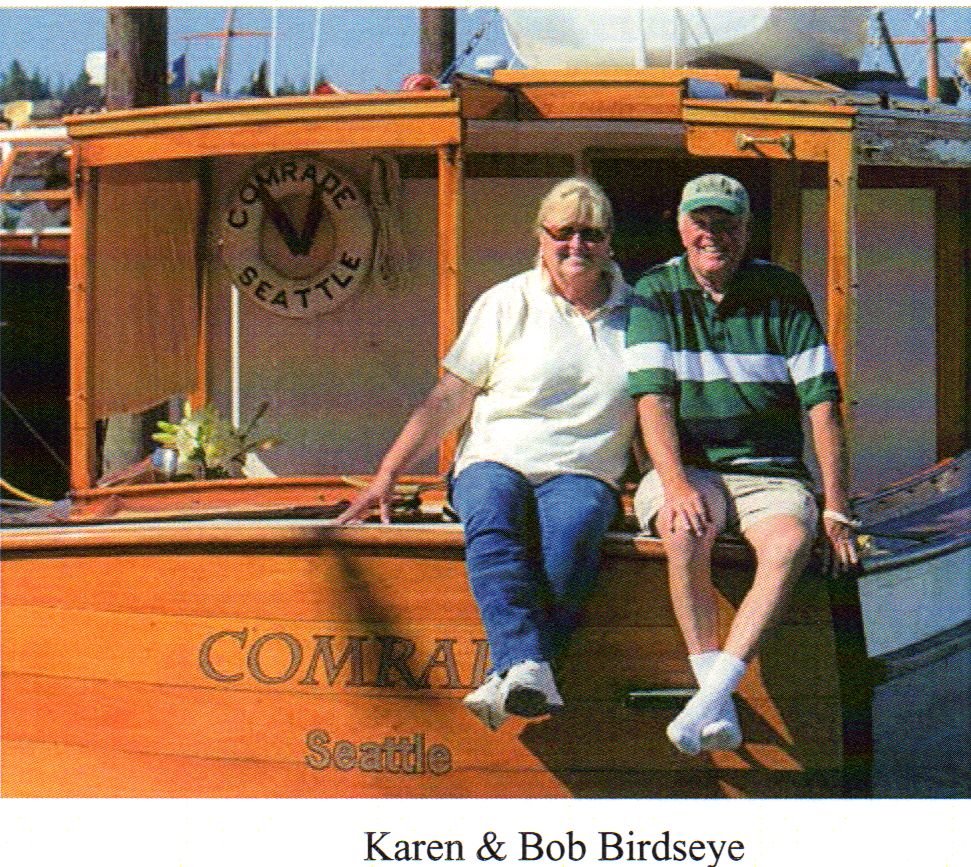from September 2013 Classic Yachting Newsletter:
PNW Fleet Report - Boating, a Life's Journey
By Bob Birdseye, PNW Fleet Director

My father, Story Birdseye's introduction to boating started in 1930 when the Scouting Board of Seattle asked him to be the leader of a new Sea Scout troop. How hard could that be? Lake Union Shipyard was generous with their donation of the SSS Dauntless, a 24-foot lifeboat, to the scouts and my dad, who had never done any boating. The next six years were full of harrowing self-taught experiences, including his first trip with a boatload of young scouts boating from Seattle to Tacoma where his in-laws had a cabin on the beach, They left late in the afternoon thinking there would be lights all along the shore to show the way. Finally spotting a fire on the beach that my mom had set to help them find the cabin, they anchored in the dark and the exhausted crew rowed ashore.
And later, a log entry on Sept 18, 1938, tells of a young scout, Don Sandall, "falling in" and being "fished out" in Agate Pass. At an Edmonds Rendezvous a couple years ago an elderly gentleman was telling my wife Karen a story of falling off one of my dad's boats as a kid, Karen asked his name, and then located the 1938 entry in the boat's logbook, with Don's name. Needless to say, both were blown away! He asked for a copy of the log page and comes back every year to visit. Eventually father's Sea Scout troop disbanded and he ended up with the boat and more importantly, a wealth of knowledge and experience. Our family of five cruised the waters of Puget Sound from 1936 to 1943 on the Dauntless.
Boating had become a big part of the Birdseye family, In 1943 our next boat was the Great Yarmouth, a 1906 42-foot Whaler escort, with more room for our growing family, l remember going from Lake Washington, through the Government Locks, and into Puget Sound during the war. It was quite a process with all the $41 inspections required and reminds me of our air travel today.
Around the time I was 10, my dad encouraged me and my twin sisters, who were a year older than I was, to each get a boat of our own. I picked a 10-foot skiff with a 2hp Johnson, Betty chose a Geary “Flattie” sailboat and Barbara a nice canoe, Along with ownership came the responsibility for care and maintenance of our boats. How little did I know then, it was the start of my life's passion for boats and boating?!
 The Comrade, "fellow traveler", the boat we have today, was built in Lake Union for Herbert William Davis Jr. of Seattle in 1930. Naval architect and marine engineer H.C. Hansen drew the 38-foot hull design especially for Davis with consistent headroom throughout the vessel for the tall man who had it built because he was looking for a wife, and was told, if he had a boat, it was kind of a magnet for the girls. Apparently the scheme worked as he found a wife within the year. Davis and his wife sold the boat and lived happily ever after on land.
The Comrade, "fellow traveler", the boat we have today, was built in Lake Union for Herbert William Davis Jr. of Seattle in 1930. Naval architect and marine engineer H.C. Hansen drew the 38-foot hull design especially for Davis with consistent headroom throughout the vessel for the tall man who had it built because he was looking for a wife, and was told, if he had a boat, it was kind of a magnet for the girls. Apparently the scheme worked as he found a wife within the year. Davis and his wife sold the boat and lived happily ever after on land.
The second owner, Carl Bolin, a telephone engineer who purchased Comrade in 1931, was involved in predicted log racing and developed some marine equipment that is still functioning on the boat today, one being the Bolin auto pilot and the other a 110 volt neon light system. ‘COMRADE WINS YACHT RACE’, were the headlines of the July 28, 1935, Nanaimo Daily Herald, Bolin took the overall prize in the 150-mile race. He was granted honorary membership in the Nanaimo Yacht Club and presented the keys to the city by Mayor J , Barsby, We're still in contact with his two daughters who have given us the awards, plaques, and keys to the city that their father received during his racing days.
My dad purchased the Comrade for $5200 in June of 1950. The afternoon we took ownership we checked out the systems and practiced maneuvering and docking, then headed by boat for home to Beaux Arts Village on Lake Washington. It was just dusk and with no mooring dock available, dad suggested I drop him off at the swim dock, take the boat out to anchor overnight, and pick him up at 8:00 in the morning. I was just 15 years old and a little anxious, but let him off, motored about a hundred feet away and anchored. For the next couple of hours I checked out and played with all the equipment then went to my bunk and fell asleep. When I heard 8 bells chime on the marine clock I thought I'd overslept, immediately pulled the anchor and got over to the dock to pick up dad. He wasn’t there! I looked at the clock and realized it was 4 o'clock in the morning!
In the early 50's our family would normally be out boating every weekend and at least two weeks in Canada's Desolation Sound each year. One of our trips was to the head of Princess Louisa Inlet where I met and played chess with James MacDonald (Mac), the summer resident that built a cabin on the 292 acres around Chatterbox Falls he bought from the Canadian Government in I927. Mac protected the land from developers and in 1953 ended up giving it to the boating public of the Pacific Northwest that eventually turned it over to British Columbia to maintain as a marine park. In those days there were very few boats out cruising but that changed as boating became more popular and boats were faster so our family just started going further north. In those days, more money was spent on ice than fuel!
From the time I was 17, my parents encouraged me to use the boat anytime they weren't using it, so on summer evenings I would take my friends through the Locks to Miller Spit, across the Sound, for evening bonfires. Every summer, with a couple of buddies, we'd plan a trip to the San Juan Islands.
Over the years we've had our share of breakdowns and groundings but our family looked at these as "adventures" rather than problems, No Vessel Assist in those days!


We decorated Comrade each year for Seattle's annual Opening Day Parade the first weekend in May. Starting in January we would decide how we wanted to decorate and along with neighbors and friends, we spent many hours building props and making costumes. It was always amazing what we came up with and how we made it work. In the 60's the Comrade was a Covered Wagon, Stemwheeler, Spouting Whale, a Malamute Saloon, a Viking Ship with fire spouting creature, and a Launching Pad for a Space Ship. We won many lst and 2nd place trophies over the years.
After my dad retired, he and mom moved to San Jose, California, They would come up to Seattle and spend four months each summer cruising South Sound and Canadian waters, Later on, when they were unable to handle the boat on their own, Karen and I would take the boat to Friday Harbor in the San Juan Islands and moor Comrade on E dock next to the Meydenbauer Bay Yacht Club outstation. Father was one of the first Commodores and original members of MBYC. My parents would drive up from San Jose, live aboard the Comrade in the harbor, and visit with all their friends. Dad was also one of the original members of our CYA PNW Fleet.
In 1984 when my dad's health started to fail, Karen and I took over the stewardship of the Comrade. The boat has never been modified except for engine replacement and in 1995 we replaced 23 planks and refitted the hull. Comrade then was powered by a Westerbeke 54hp engine cruising at 7 knots, burning 1.25 gallons an hour. [Update: Current owners have re-powered again in November 2019 with a Yanmar 4JH57 diesel.]
While We don't spend as much time on the boat as my folks did, We do cruise in the summers and enjoy several CYA rendezvous a year including heading up the Edmonds Waterfront Festival on the first Weekend in June. Comrade is now kept safely in a boathouse at the Port of Everett Marina, close to our home in Snohomish, and close enough to put into motion the many lessons my dad taught me on the care, maintenance, and love of a great wood boat.


